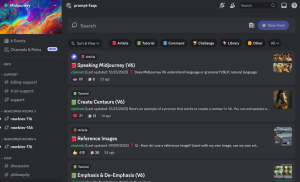By Martha B. Coven

The COVID-19 pandemic has transformed the habits of working professionals. Amidst the struggle to secure child care and a reliable internet connection, we’ve experienced a revolution in another fundamental aspect of work life: our writing.
Many jobs now involve a constant juggling act of emailing, Slack messaging, and texting to keep projects moving along. New colleagues and clients may get to know us through our messages and memos, rather than with a handshake. “This meeting could have been an email” prayers are being answered—asynchronous work schedules mean fewer gatherings and more written communication. And we’re spending more time promoting our ideas and products with blurbs written for social media.
How you write can affect your professional reputation and your ability to get the job done. So how can you make sure your workplace writing is effective, at a time when good writing is more important than ever?
First, get right to the point—or as they say in the military, “Bottom Line Up Front.” The U.S. Department of Defense is the largest employer in the world. Its leaders know that efficient communication can save time, money, and even lives. And in the digital age, getting to the point and being clear about your ask is critical. You can’t count on people to keep scrolling on a smartphone, so put your takeaway message in that first screen and use email subject lines wisely. “FYI” or “Proposal” is a waste of space; something specific like “Retreat agenda – for review by Friday” gets the job done.
Second, think about your audience. Writing doesn’t come with facial expressions. Sure, emoji and the occasional GIF can help, if appropriate to your work environment. But more importantly, choose language that will make the reader hear you instead of tuning you out. Think about what matters to them, not what matters to you. Unless you’re scribbling in a journal, the goal of writing is connecting with others. Take particular care when communicating with someone you’ve never met, to avoid being misunderstood.
And finally, be smart about how you use the page or the screen. Long blocks of text look deadly, so keep your paragraphs short. Look at how journalists write, with crisp paragraphs that clearly explain complex situations. That’s what we’re striving to do in our own jobs.
If your writing can be counted in pages rather than paragraphs, use conclusion-oriented headings to help the reader navigate through the document. For example, instead of a heading like “Costs and benefits of adding a new product line” (which leaves the reader in the dark about the punchline)—write: “Adding a new product line would be too costly.” Put useful headings in your slide decks as well as written reports. A slide shouldn’t be an intelligence test; tell your reader what the point of a graph or chart is and they’ll find it easier to follow along.
Formatting tools like bullets and bolding text also make your writing more readable, if you don’t overdo it. Even in short communications, they can highlight key points so they don’t get overlooked by a reader racing through a pile of messages at the end of the day.
Finally, if you’re prone to typos or misspellings, the rise of virtual writing is a double-edged sword. On the one hand, people tend to tolerate errors more on messaging platforms, because they have a casual feel and we know everyone is typing quickly, often with clumsy fingers on a handheld device. On the other hand, if you repeatedly confuse your with you’re, some readers will judge you for it. Before clicking send, it’s worth asking a colleague to look over an important communication, such as a lengthy email to a client or a sensitive internal post.
While the volume of workplace writing may have gone up during the pandemic, the need to do it well is not new. Nearly a century ago, Winston Churchill was begging his staff to write shorter papers that hit the “essential points.” Long before the pandemic hit, Amazon developed a memo-writing culture where the best in class were praised as having “the clarity of angels singing.” We all appreciate the colleague who writes clearly and concisely. In this era of constant communication, let’s all try to be that person.
Martha B. Coven is a visiting professor and lecturer at the Princeton School of Public and International Affairs and the author of Writing on the Job: Best Practices for Communicating in the Digital Age, released this month by Princeton University Press.
(36)
Report Post





